Content type: Visual Essay based on the Speculative Design Project Ecosystems of Excess
Credits: Pinar Yoldas (designer, artist, researcher)
Year: 2014
Introduction:
Pinar Yoldas’ speculative-design project Ecosystem of Excess asks the question, ‘If life started today in our plastic debris-filled oceans, what kinds of life forms would emerge out of this contemporary primordial ooze?’
Yoldas was inspired by groundbreaking findings of new bacteria that burrow into pelagic plastics and her own research into the Great Pacific Garbage Patch, the monumental floating island of plastic waste covering somewhere between 700,000 and 15 million square kilometres. The project speculates on an alternative evolution scenario where sea animals develop organs to sense and metabolize plastics so that creatures such as pelagic insects, marine reptilia, fish and birds thrive rather than suffering in the toxic environments created by humans. The project imagines post-human life forms in order to expose the extreme impact that our mindless and unsustainable consumption has on the planet.
The following images and captions are a visual essay by Pinar Yoldas exploring how an 'Ecosystem of Excess' would look and function:
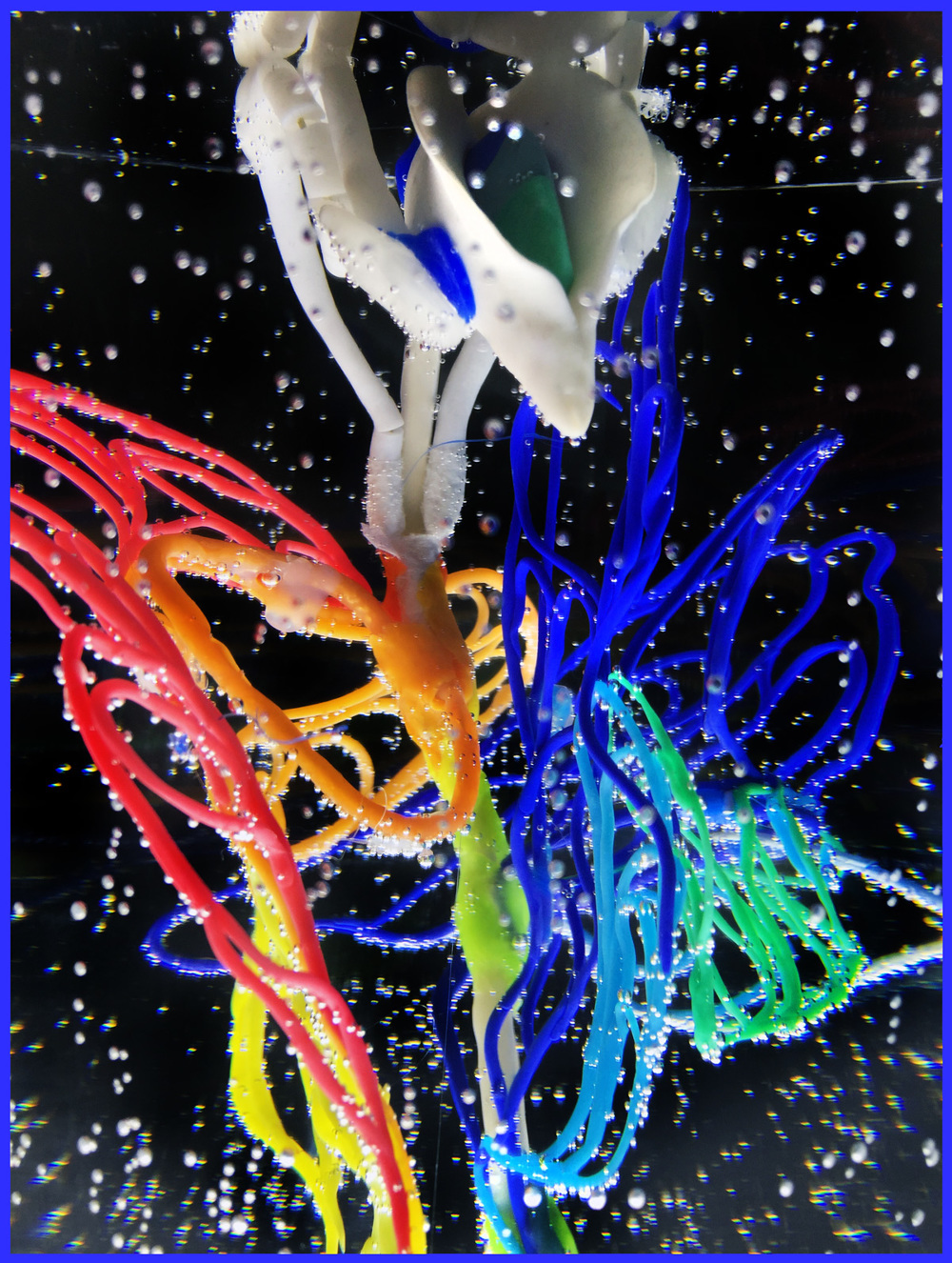
P-Plasticeptor: Sensory organ to detect plastics
Polypropylene is the second most common plastic after polyethylene. P-Plasticeptor is a sense organ that can detect polypropylene polymers in the ocean. The organ takes its name from its sensing capabilities for polypropylene and its shape that almost resembles the letter P.
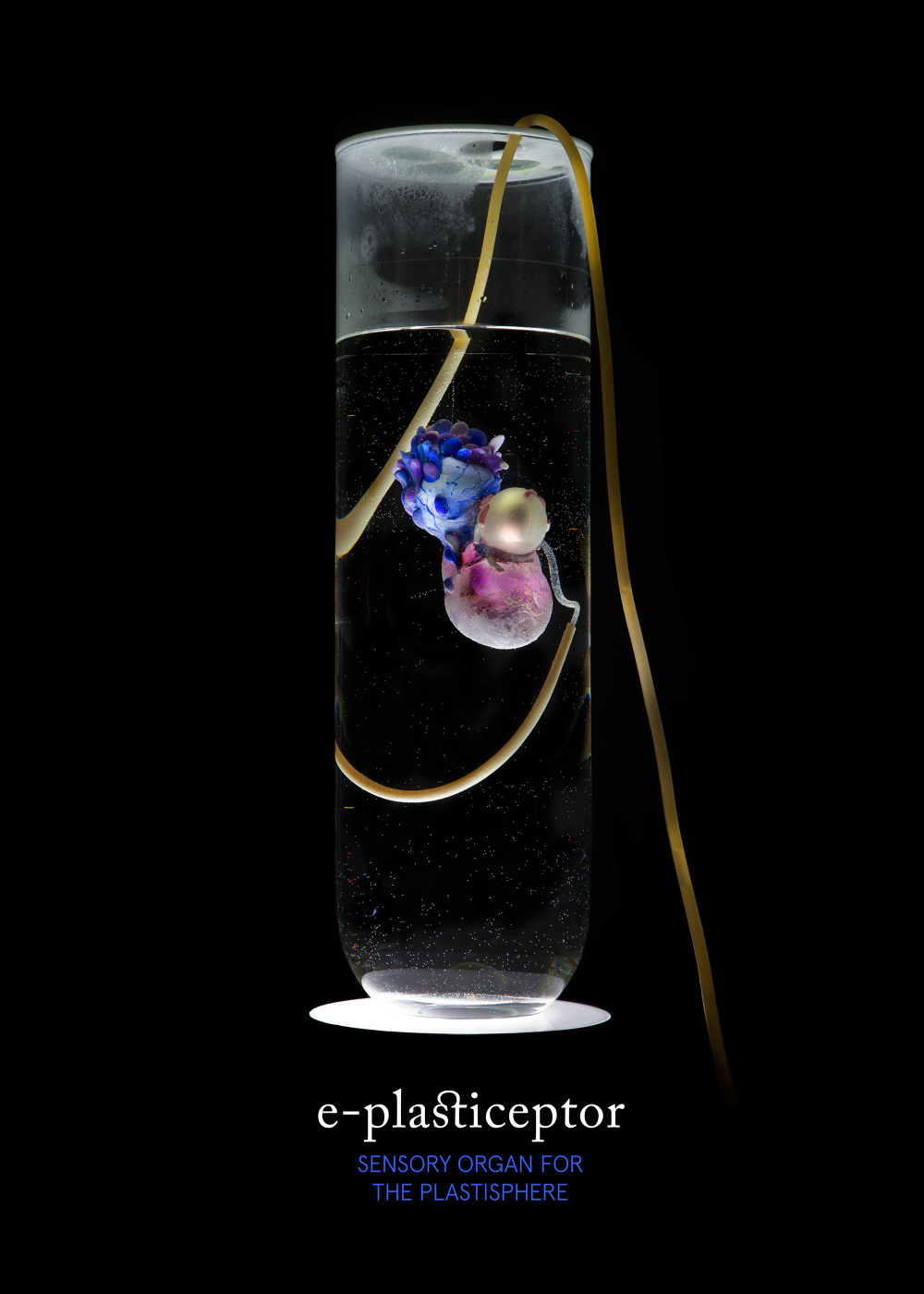
E-Plasticeptor: Sensory organ to detect plastics
This is a sensory organ that can detect the most common plastics, polyethylene. It works by taking in ocean water and analyzing its content inside its bulbous structure. Without this organ, plastisphere creatures would be blind to their food which is plastics.
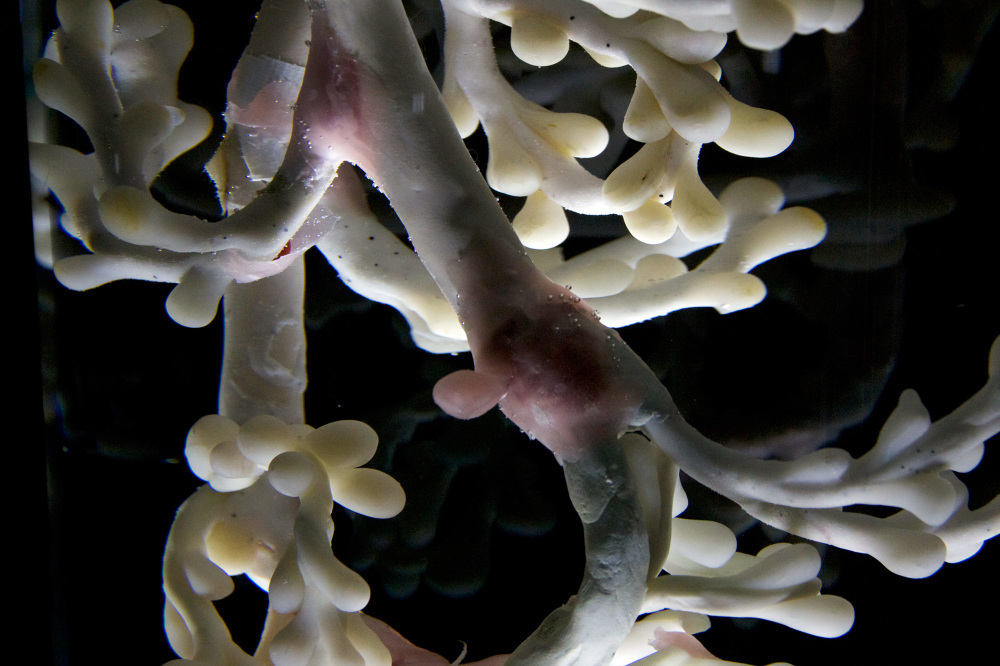
Stomaximus
Stomaximus is a digestive organ that is designed to metabolize plastics. It has tiny little chambers on it, which has different types of bacteria that is specialized to break down a different type of plastics. Polyethylene Terephthalate (PET or PETE), High Density Polyethylene (HDPE), Polyvinyl Chloride (PVC), Low Density Polyethylene (LDPE), Polypropylene (PP), Polystyrene (PS), Polycarbonate, Polyvinylidine Chloride, Acrylonitrile-Butadiene-Styrene, (ABS), Polyester , Polyurethane, (PU), Polyacrylates, (Acrylic), Polyamide, (PA), (Nylon) and many more can be converted to energy in Stomaximus’ infinite little chambers.
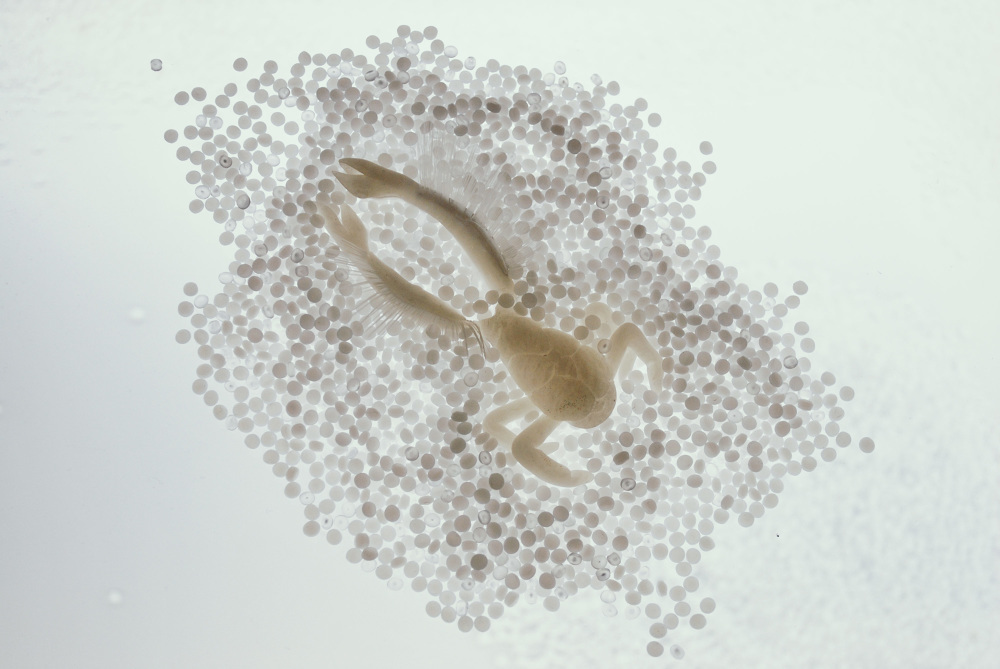
Nurdle Beach: Preproduction Plastic Pellets
Preproduction Plastic Pellets are the building blocks of every single plastic object you see around. About 27 billion tons are produced in the United States only and these small pellets escape the borders of the corporate empire and find their way to the beaches. Colloquially known as hurdles, this is the most common beach contaminant. Yet in an ecosystem of excess, hurdles give life to many creatures, providing nutrition and shelter to plastic loving creatures.
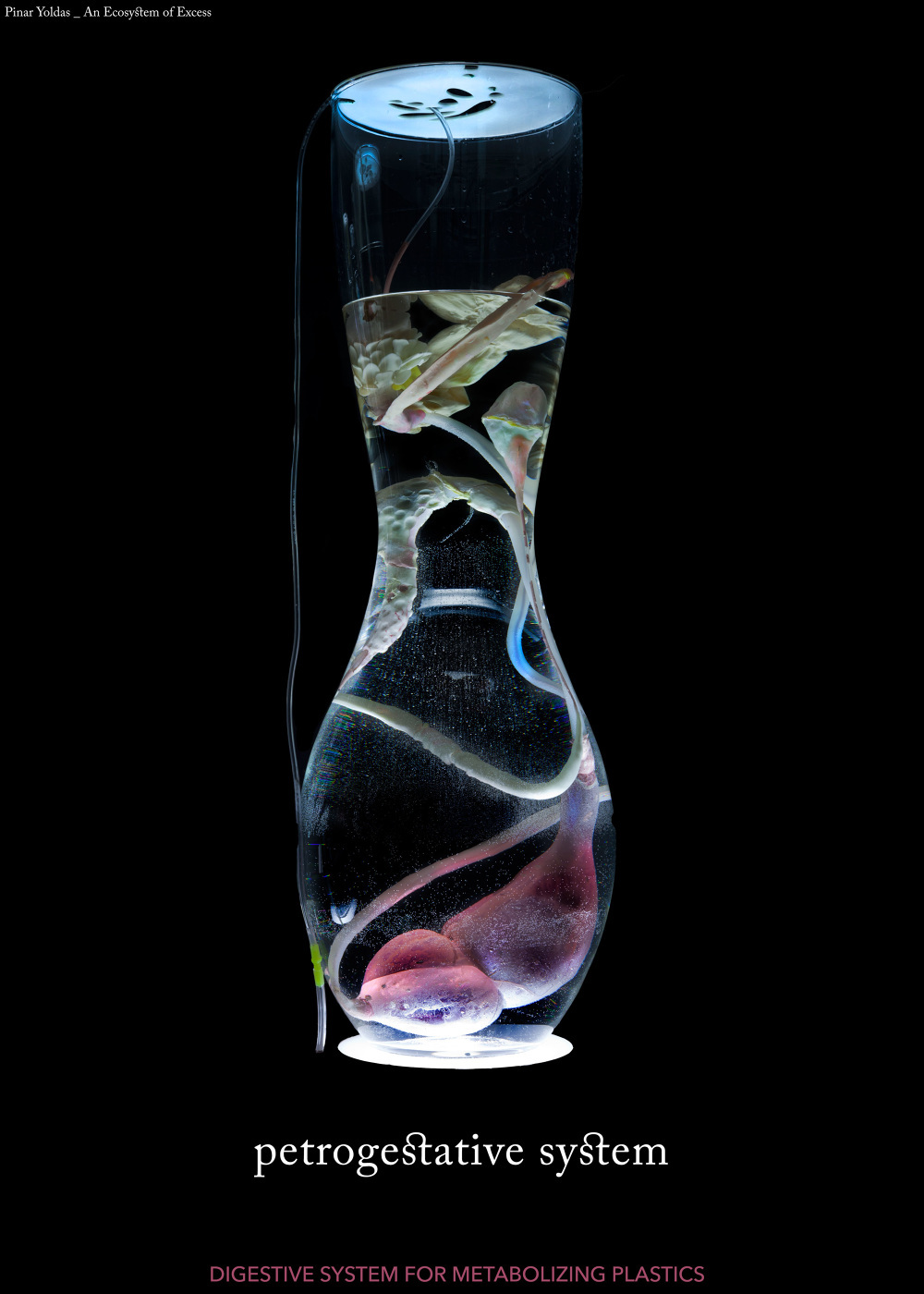
Petrogestive system: Digestive system for birds that eat plastics
This is an entire digestive tract found primarily in plastisphere birds. It is taxing to crumble and granulate hard plastics for digestion, therefore the system has a specialized gizzard, proventriculus, special intestines and bladders to break down any kind of plastics.
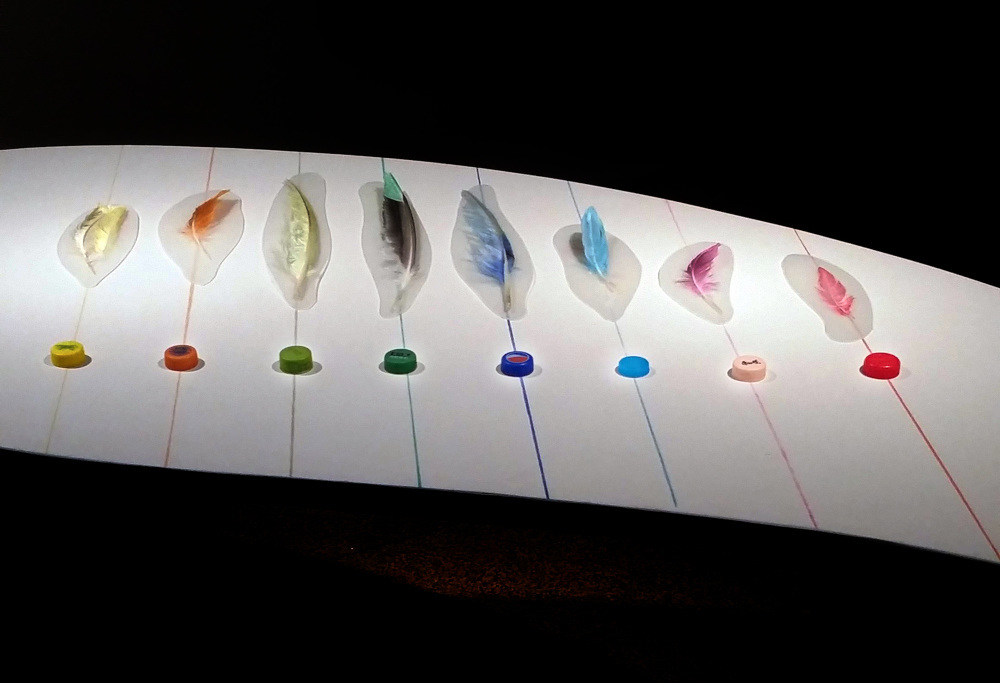
Pantone Pigmentation in bird populations of the Plastisphere
The Petrogestive system of the plastisphere birds means rainbow birds now soar above and around the oceans as a result of the pigmentation of their feathers. Common colours include Pantone 485 - Coca Cola Red, Pantone 38997 - Evian Pink and Pantone 18-465 - Dasani Blue.
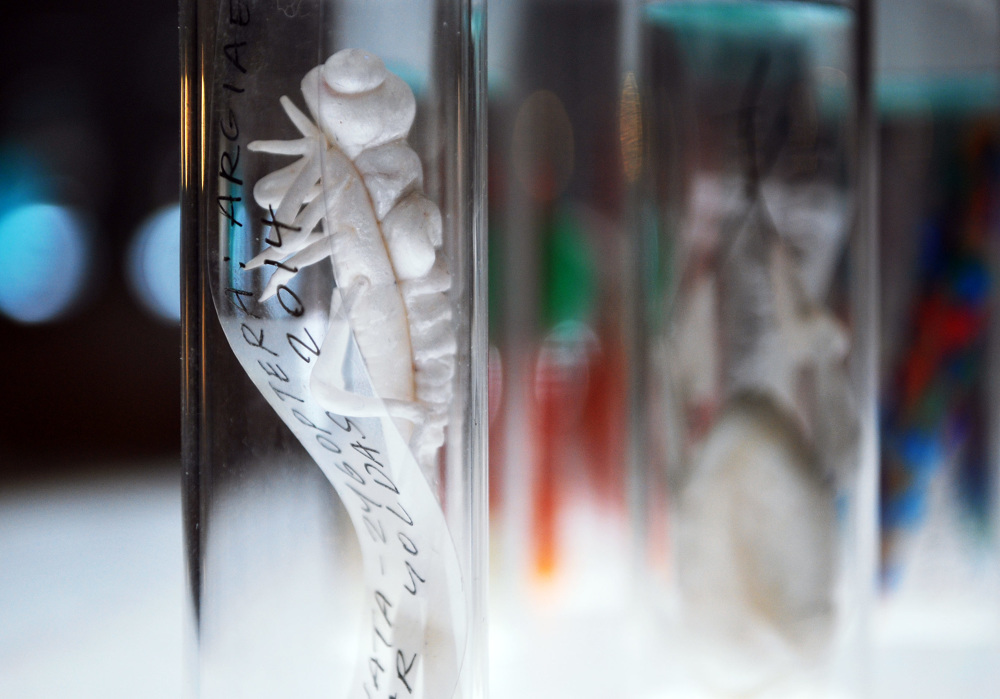
The Plastisphere Insects
Pelagic insects require hard substrates upon which to lay eggs, and their reproduction is limited by the availability of floating materials. Microplastics – i.e., the main ingredients of the plastic ocean – are the perfect sites for the oviposition of aquatic insects. According to a 2012 scientific study, there is a positive correlation between increased levels of microplastics in the neuston layer and the reproductive success of pelagic insects. As a consequence, the plastisphere opens a new chapter in the wondrous world of aquatic insects. With their state-of-the-art microplastics nests, their most delicate & nutritious eggs, and their wildly coloured bodies, plastisphere insects are key players in
the Ecosystem of Excess.